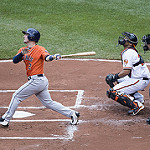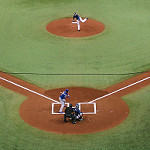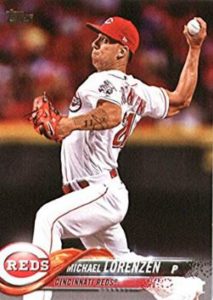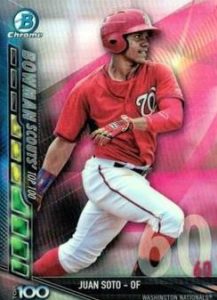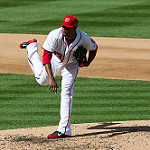There have been (at least) 67 MLB no-hitters lost with two outs the ninth inning.
*Note: Five of these were in games tied in the ninth, so the no-it bid did not end with two outs in the final inning.
 Yesterday (July 29, 2018), Braves’ southpaw Sean Newcomb, went into the top of the ninth inning having fanned eight and allowed just one Dodgers’ base runner – on a sixth inning, five-pitch walk to Dodgers’ RF Yasiel Puig. Newcomb was just three outs away from his tenth victory of the season, his very first MLB complete game, a shutout and, of course, a no-hitter. Note: For a look at pitchers whose first complete game was a no-hitter, click here. He would get only one of those rewards.
Yesterday (July 29, 2018), Braves’ southpaw Sean Newcomb, went into the top of the ninth inning having fanned eight and allowed just one Dodgers’ base runner – on a sixth inning, five-pitch walk to Dodgers’ RF Yasiel Puig. Newcomb was just three outs away from his tenth victory of the season, his very first MLB complete game, a shutout and, of course, a no-hitter. Note: For a look at pitchers whose first complete game was a no-hitter, click here. He would get only one of those rewards.
Newcomb started the ninth on a roll, getting LA second baseman Logan Forsythe to fly out to left in a two-pitch at bat. Things then got a little tougher, as it took nine pitches to get the next batter (1B Cody Bellinger) on a fly to short right. At this point, Newcomb, one out away from a complete-game, no-hit shutout had tossed 128 pitches. Next up was leadoff hitter/SS Chris Taylor. On a 2-2 count, Taylor shot a mid-90s fastball from Newcomb into the hole between third and short to end both the no-hit bid and Newcomb’s outing (Dan Winkler came on in relief). Winkler got the final two outs, but gave up a run-scoring single (run charged to Newcomb) to 3B Manny Machado.
Now, losing a no-hitter with two outs in the ninth may seem an unusual occurrence, but it’s really not. In fact, there have been (at least) 67 no-hitters lost in the ninth – 13 of them perfect games. (These are instances BBRT has been able to document.)
A total of 13 perfect games have been lost with two outs in the ninth inning – although three of those ended as no-hitters.
Here are a few other stories about no-hitters lost with two down in the final frame.
It’s Tough being You … Especially in a Year that ends in “13.”
The number 13 keep coming up as you look at lost no-hitters and perfect games. In 2013, two guys names “Yu” actually lost perfect games with two-outs in the final frame.
April 2,2013, the Rangers’ Yu Darvish went into the ninth inning of a game against Houston with a 7-0 lead and a perfect game in progress. He started the inning in fine form, getting DH Jason Castro and catcher Carlos Corporan on ground outs (to SS and 2B, respectively). Then Astros’ shortstop Marwin Gonzalez hit the first pitch in his at bat (and Darvish’s 111th pitch) up the middle for a ground ball single. With that safety, Darvish’s day was done, as Rangers’ Skipper Ron Washington brought in Michael Kirkman to close it out (which he did with a single and a strikeout).
On September 6, 2013, the San Francisco Giants’ Yusmeiro (Yu) Petit joined the unlucky “almost perfect” rotation. With two out in the ninth, Petit – with a 3-0 lead over the Diamondbacks – had retired all 26 batters he had faced, fanning seven. The Diamondbacks sent up pinch hitter Eric Chavez, who worked the count full. Then, just one strike away from a perfect game, Petit gave up a single to right field. Petit retired the next hitter CF A.J. Pollock on a grounder to third – settling for a one-hit shutout.
The Consolation Prize -Perfect Games that Became No-Hitters
Of the thirteen perfect games broken up with two outs in the ninth inning, three did end up as no-hitters.
On July 4, 1908, New York Giants’ hurler Hook Wiltse (who would win 139 games in 12 MLB seasons), retired the first 26 Phillies before hitting Philadelphia pitcher George McQuillan with a pitch on a 2-2 count. It was a scoreless game through nine, and Wiltse went on to pitch a hitless tenth (preserving the no-hitter) as the Giants won 1-0.
On September 2, 1972, Milt Pappas of the Cubs had an 8-0 lead over the Padres – and a perfect game in progress – as San Diego batted in the top of the ninth. After retiring the first two batters, Pappas walked pinch hitter Larry Stahl on a 3-2 pitch. Pappas retired the next hitter, so while he lost the perfect game, he did save the no-hitter.
On June 20, 2015, Nationals’ right-hander Max Scherzer came within one out – within one strike actually – of pitching a “perfecto.” He entered the top of the ninth with a 6-0 lead over the Pittsburgh Pirates – having retired the first 24 batters, striking out 10. In the ninth, Scherzer retired the first two batters (RF Gregory Polanco on a pop out to the catcher and SS Jordy Mercer on a liner to center) and then worked the 27th hitter (pinch hitter Jose Tabata) to a 2-2 count. Tabata fouled off three 2-2 pitches before Scherzer lost the perfect game in perhaps the most painful way (in more ways than one) possible – by hitting Tabata with a pitch (a breaking ball to the elbow). Scherzer then got Pirates’ second baseman Josh Harrison on a fly ball to left, completing the no-hitter.
Another Unlucky 13 – 12 Perfect Innings for the loss
For a real hard luck story, consider the Pittsburgh Pirates’ Harvey Haddix, who took a perfect game into the 13th inning – AND LOST.
On May 26, 1959, Haddix took the mound against the power-laden Milwaukee Braves (who had won the National League pennant the previous two seasons and came into the game again leading the league). Haddix retired the first 36 hitters in order – fanning eight, carrying a perfect game into the bottom of the 13th. A 20-game winner in 1953, the 33-year-old Haddix had come into the game 4-2, with a 2.67 ERA in seven starts – and had thrown complete games in his two previous outings. (He would end up 12-12, 3.13 on the year.)
Unfortunately, the Braves’ Lew Burdette, despite giving up 12 hits and fanning only two, had held the Pirates scoreless. (Like Haddix, Burdette had not issued a single free pass.) Milwaukee 2B Felix Mantilla led off the 13th by reaching on error by Pirates’ third baseman Don Hoak. Slugging 3B Eddie Mathews bunted Mantilla over to second, which led to an intentional walk to RF Hank Aaron, bringing up 1B Joe Adcock.
Adcock rapped a 1-0 pitch over the right field fence for what appeared to be a three-run home run. However, the Braves, in celebrating the tension-filled victory, forgot how to run the bases. Adcock passed Aaron between second and third and, after some deliberation, Adcock was called out – ultimately changing his three-run homer to a one-run double. So, despite 12 perfect innings, Haddix lost the no-hitter, the shutout and the game itself. But he did etch his name forever into baseball lore; and countless trivia quizzes.
No-Hitter Lost with Two Out in Ninth in the World Series
Only one of the no-hitters lost with two outs in the ninth came in post season play. On October 3, 1947, Yankees’ right-hander Bill Bevens was on the verge of World Series history. Bevens went into the ninth with a 2-1 lead over the Dodgers and had yet to yield a hit (the Dodgers had scored one run in the fifth inning on two walks, a sacrifice bunt and a fielder’s choice). Bevens sandwiched a fly out and foul out around a walk to Dodgers’ center fielder Cal Furillo (Bevens’ ninth walk of the game), and so was just one out from a World Series win and no-hitter. That’s when the wheels came off. The dangerous Pete Reiser was sent in to pinch hit for pitcher Hugh Casey. Al Gionfriddo, pinch-running for Furillo, stole second and Reiser was walked intentionally – putting runners on first and second with two outs, the Yankees still with a one-run lead, the no-hitter intact and Cookie Lavagetto pinch hitting for Eddie Stanky (Eddie Miksis was also brought in to run for Reiser). Lavagetto doubled to right on Bevens’ second pitch, both runners scored and Bevens lost the no-hitter and the game.
Dave Steib’s Hard Luck – Three No-Hitters Lost with Two Outs in the Ninth
Two In Consecutive Starts
Photo by Bobolink
The Blue Jays’ Dave Stieb took the mound on September 24 and September 30, 1988 (consecutive starts) against the Indian and Orioles, respectively, and produced the same result. In both games, he lost a no-hitter with two outs in the ninth (and a two-ball/two-strike count on the batter). Stieb did get two complete-game shutouts, 1-0 over the Indians and 4-0 over the Orioles. The games were his final two starts of the season, so he had the entire off-season to contemplate his bad luck.
The following season (on August 4, 1989), Stieb found himself again on the brink, this time taking a perfect game in the ninth inning, holding a 2-0 over the Yankees. He started the inning as though ready to make history, striking out pinch hitters Hal Morris and Ken Phelps on nine pitches. Then the number-nine hitter, center fielder Luis Polonia, broke up the “perfecto” and no-hitter with a double to left. Second baseman Steve Sax followed with a run-scoring single, before left fielder Polonia grounded out to end the game. Stieb did finally get his no-hitter on September 2, 1990.
Perfect Game Lost on a Bad Call
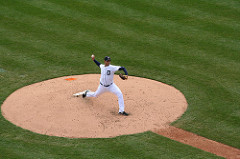
Photo by Kevin.Ward 
Perhaps the most heartbreaking “no-hitter breakup” took place on June 2, 2010, when Detroit Tigers’ righty Armando Galarraga found himself on the mound in the top of the ninth 26 outs into a perfect game (three strikeouts). The Tigers had a 3-0 lead and Galarraga was facing Indians’ second baseman Jason Donald. Galarraga induced Donald to ground to right side of the infield and first-sacker Miguel Cabrera moved to his right to make a fine play, spinning and throwing to Galarraga covering first (who clearly beat Donald to the bag). Umpire Jim Joyce called Donald safe, a mistake he admitted and apologized for after the game. (Talk about a bad time for a bad call.) The official scorekeeper gave Donald and infield single, ending both the perfect game and the no-hitter. Galarraga retired the next batter – CF Trevor Crowe – on a groundout. Joyce’s call, despite the post-game mea culpa, stood, and Galarraga joined the list of pitchers losing a perfect game with two outs in the ninth.
Primary Resources: Baseball-reference.com; Society for American Basebal Research; MLB.com
LIKE/FOLLOW Baseball Roundtable’s Facebook page here.
Member: Society for American Baseball Research (SABR); The Baseball Reliquary; The Negro Leagues Baseball Museum
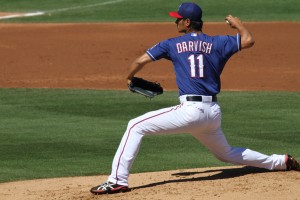
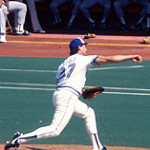

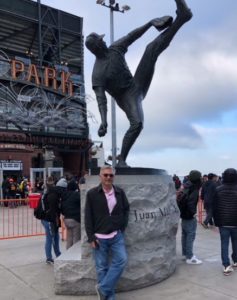
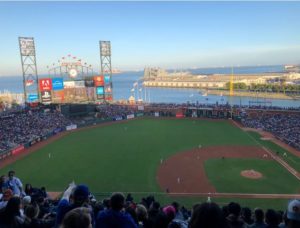



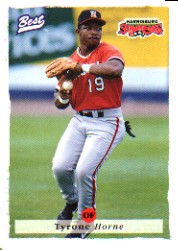







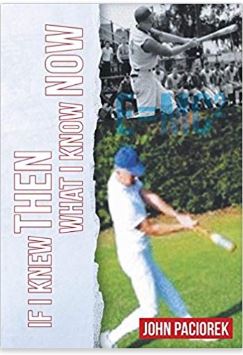
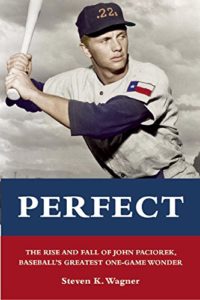
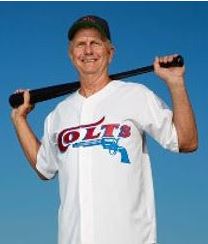
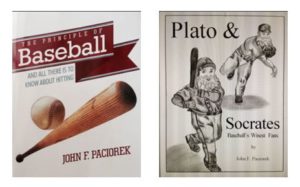
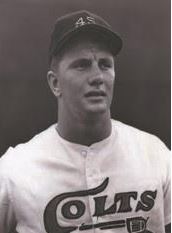
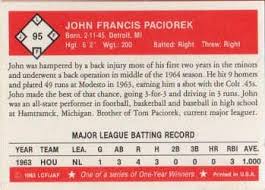

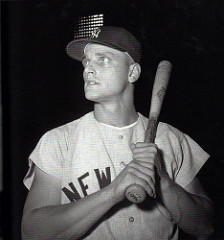
![[Libe Washburn with Rube Marquard, New York, NL (baseball)] (LOC) by The Library of Congress Rube Marquard photo](https://baseballroundtable.com/wp-content/uploads/2018/07/2162714047_a06f24f6d5_m_Rube-Marquard.jpg)
